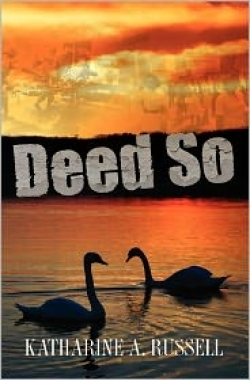Deed So
In the Acknowledgements section at the end of the novel Deed So, author Katharine A. Russell says: “I mourn the lost Maryland of my childhood…With each passing year, Washington grows outward, erasing more and more of what was unique, celebrated and authentic in terms of culture, economy and community.” Russell asserts that it is for these “lost places” that we need storytellers.
Deed So is the story of Haddie, a twelve-year-old girl growing into her teen years in the 1960s in Southern Maryland, on the western shore of the Chesapeake Bay, in the counties south of Washington DC. Her world is bucolic, privileged, and segregated. There is a bar in town with a white side and a Negro side. There is one black child in Haddie’s catechism class, an acknowledged “diocesan guinea pig.” There are “good negroes” and the “outside agitators” starting to push for integration and equal rights. The author relates how Erasmus Jackson, a successful black farmer cannot get a loan at the local bank to buy farm equipment solely because he is black.
Russell has penned an interesting story of a young girl coming of age in a rapidly changing world, but the writing style sometimes gets in the way of the narration. Russell often has a long reach for description, for example, “Elmer took a while to stop, like a jam-packed semi on a downhill grade.” or “Mother’s knuckles perched on the steering wheel like eggs in a carton.”
Occasionally, Russell’s comparisons stretch credulity. “I felt like a football player running with the ball and being tackled over and over.” How would a twelve year old girl know what it is like to be a running back in a football game? There is no mention that Haddie ever played football.
There is an awful lot going on in Deed So. The story unfolds against the backdrop of the burgeoning Vietnam War, the civil rights movement, and the changing economy of the rural South. Deed So is a good book that could have been an even better story had it more thoroughly examined a narrower slice of life in the 1960s.
Reviewed by
John Michael Senger
Disclosure: This article is not an endorsement, but a review. The publisher of this book provided free copies of the book and paid a small fee to have their book reviewed by a professional reviewer. Foreword Reviews and Clarion Reviews make no guarantee that the publisher will receive a positive review. Foreword Magazine, Inc. is disclosing this in accordance with the Federal Trade Commission’s 16 CFR, Part 255.

